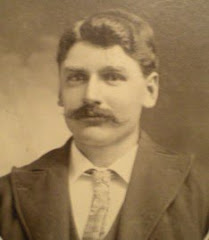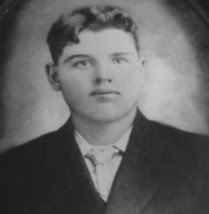 ***************Bartholomew Map of NE Ireland***********
***************Bartholomew Map of NE Ireland***********Click on Map to Enlarge
The border between Derry to the west and Antrim to the East is shown with a gray vertical line between Port Rush and Lough Neagh. The River Bann is west of this line.
Note on Land Divisions in Ireland
Province
The oldest and largest land unit in Ireland is the Province, dating back into pre-history and early historic times. There were originally five Provinces in Ireland, with provincial ‘overkings’ who were supported by the kings of the smaller local kingdoms within. By the 17th century, the number of Provinces was reduced to four – Ulster in the north, Leinster in the east, Connaught in the west and Munster in the south.Present day Northern Ireland (sometimes referred to as Ulster) comprises six of the nine counties that make up the Province of Ulster, with counties Cavan, Donegal and Monaghan now lying within the Republic of Ireland.
The oldest and largest land unit in Ireland is the Province, dating back into pre-history and early historic times. There were originally five Provinces in Ireland, with provincial ‘overkings’ who were supported by the kings of the smaller local kingdoms within. By the 17th century, the number of Provinces was reduced to four – Ulster in the north, Leinster in the east, Connaught in the west and Munster in the south.Present day Northern Ireland (sometimes referred to as Ulster) comprises six of the nine counties that make up the Province of Ulster, with counties Cavan, Donegal and Monaghan now lying within the Republic of Ireland.
County
The county is the territorial equivalent to the English shire. It was created by the English administration in Ireland as the major subdivision of an Irish province in the years following the Anglo-Norman invasion of Ireland. The county system as it is today was extensively used in the great 17th century land surveys such as the Civil Survey, Petty’s Down Survey and the Books of Survey and Distribution.
The county is the territorial equivalent to the English shire. It was created by the English administration in Ireland as the major subdivision of an Irish province in the years following the Anglo-Norman invasion of Ireland. The county system as it is today was extensively used in the great 17th century land surveys such as the Civil Survey, Petty’s Down Survey and the Books of Survey and Distribution.
-The county was the principal unit of administration for justice in Ireland - for the courts of Quarter Sessions and Assizes. The modern system of local government introduced in Ireland under the 1898 Local Government Act also used the county as its administrative unit. This was not abolished in Northern Ireland until 1972, when new district council areas were created.
Barony
The barony is now an obsolete administrative unit that is mid-way in size between a county and a parish. It derived, at least in part, from the district of an Irish chieftain who held his land from the kings of a Province. The system of bringing Irish local kingdoms into baronies began in the medieval period but did not extend to the whole of Ulster until the early 17th century. By this time the barony was being used for taxation and administrative purposes and will be found in land, tax and other government records. Even the 19th century valuation books and census returns all record the barony. Large baronies were subdivided until there were 58 baronies in the area that comprises the present day Northern Ireland.
The barony is now an obsolete administrative unit that is mid-way in size between a county and a parish. It derived, at least in part, from the district of an Irish chieftain who held his land from the kings of a Province. The system of bringing Irish local kingdoms into baronies began in the medieval period but did not extend to the whole of Ulster until the early 17th century. By this time the barony was being used for taxation and administrative purposes and will be found in land, tax and other government records. Even the 19th century valuation books and census returns all record the barony. Large baronies were subdivided until there were 58 baronies in the area that comprises the present day Northern Ireland.
Parishes
-Civil parishes
The parish was once an ecclesiastical unit of territory based on early Christian and monastic settlements. It was then adopted as a civil administrative area. Over time, some civil and ecclesiastical boundaries came to vary.
-Church parishes
The boundaries of Church of Ireland parishes largely coincide with those of civil parishes and are called by the same name. In contrast Roman Catholic parishes, though originally based on what became the civil parish, frequently do not correspond with the names or boundaries of civil parishes. The boundaries of present day civil parishes were not finally demarcated until the mid 19th century - until then, it was not uncommon to find parishes being subdivided to form new parishes, or townlands being moved from one parish to another. Both civil parishes and Roman Catholic parishes can cross county and barony boundaries. The parish was frequently used for administrative purposes in the 19th century, for example, in the tithe applotment survey, the census returns and the valuation records. In Northern Ireland there are 268 parishes.
The parish was once an ecclesiastical unit of territory based on early Christian and monastic settlements. It was then adopted as a civil administrative area. Over time, some civil and ecclesiastical boundaries came to vary.
-Church parishes
The boundaries of Church of Ireland parishes largely coincide with those of civil parishes and are called by the same name. In contrast Roman Catholic parishes, though originally based on what became the civil parish, frequently do not correspond with the names or boundaries of civil parishes. The boundaries of present day civil parishes were not finally demarcated until the mid 19th century - until then, it was not uncommon to find parishes being subdivided to form new parishes, or townlands being moved from one parish to another. Both civil parishes and Roman Catholic parishes can cross county and barony boundaries. The parish was frequently used for administrative purposes in the 19th century, for example, in the tithe applotment survey, the census returns and the valuation records. In Northern Ireland there are 268 parishes.
Townland
The townland is an ancient unit, dating back to pre-Norman times. It is the smallest administrative division throughout the island of Ireland that is still in use. The spelling of townland names is subject to considerable variation, due largely to the difficulties of representing the pronunciation of Irish language names in English spelling. They were also the principal division in major land valuations, surveys and census enumerations such as the tithe applotment books and Griffith’s valuation. The significance of the townland today is to help identify small local rural areas.
The townland is an ancient unit, dating back to pre-Norman times. It is the smallest administrative division throughout the island of Ireland that is still in use. The spelling of townland names is subject to considerable variation, due largely to the difficulties of representing the pronunciation of Irish language names in English spelling. They were also the principal division in major land valuations, surveys and census enumerations such as the tithe applotment books and Griffith’s valuation. The significance of the townland today is to help identify small local rural areas.
Source: http://www.proni.gov.uk/











No comments:
Post a Comment